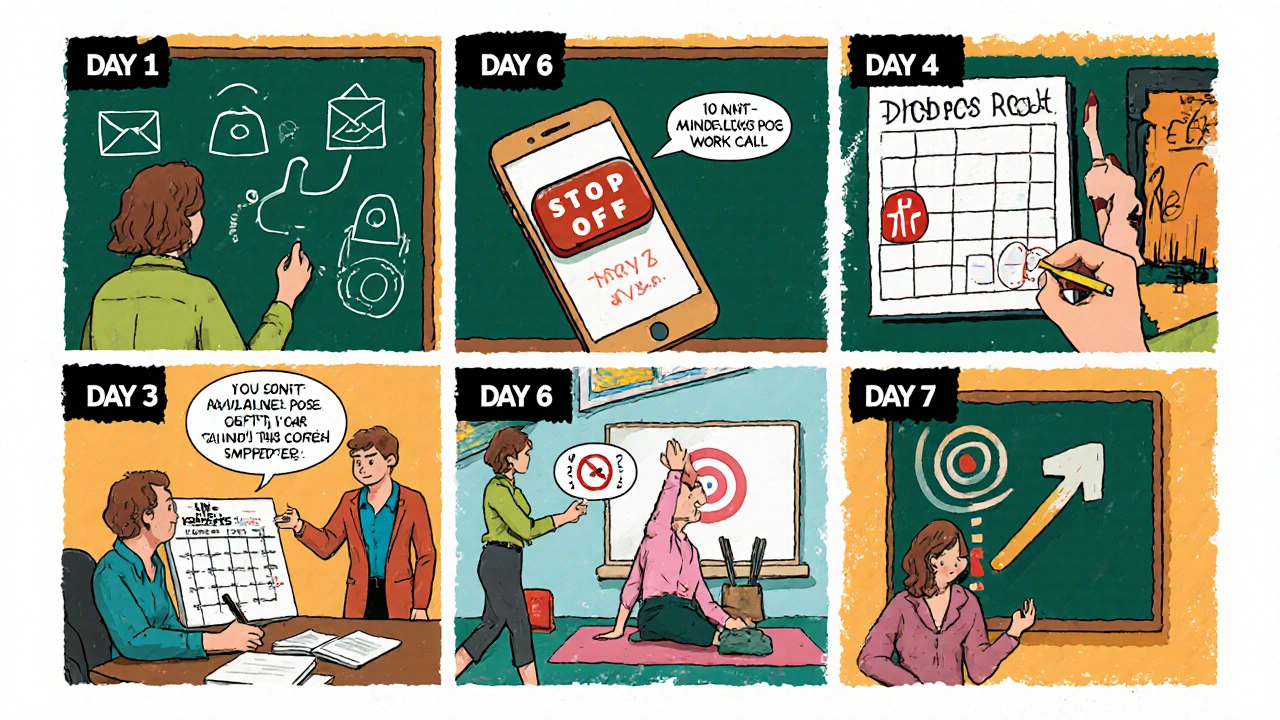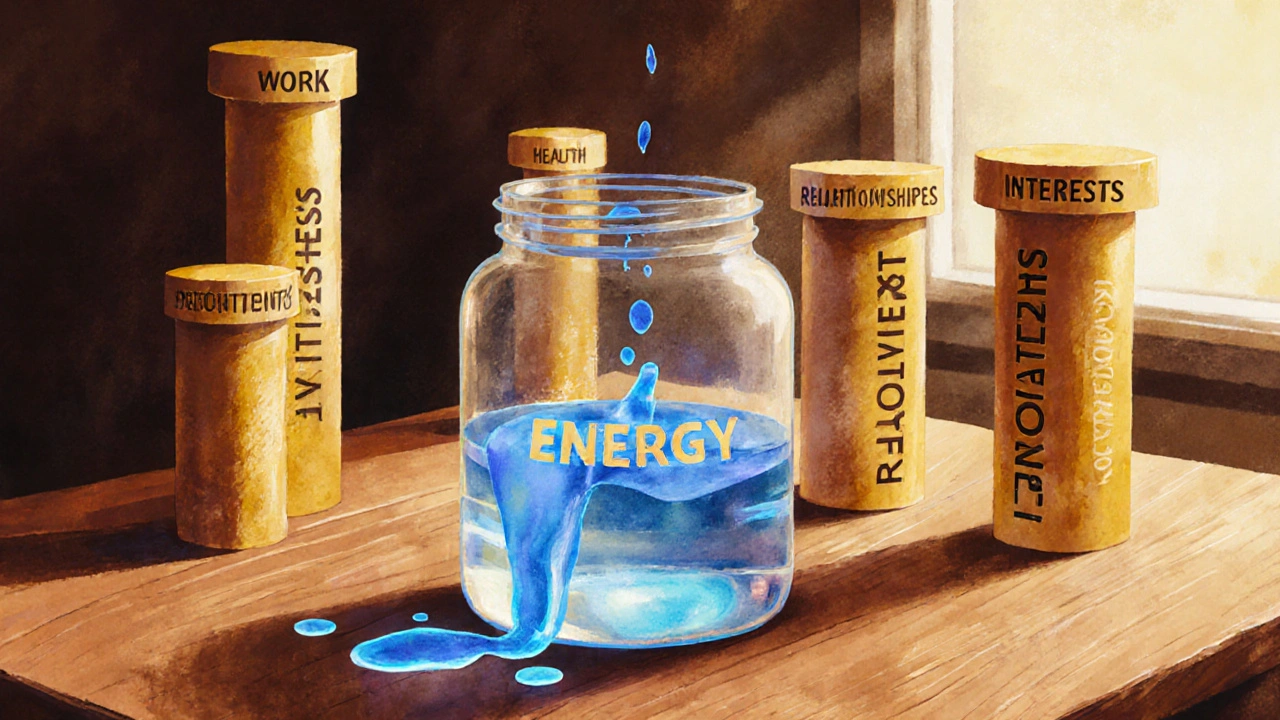Life Balance Weakness Assessment Tool
Assess Your Life Balance Weaknesses
This assessment helps identify weaknesses affecting your balance. Answer honestly to get personalized recommendations.
Your Life Balance Assessment
Recommended Actions:
Ever feel like your own shortcomings are pulling you off track? That tug‑of‑war between what you struggle with and how steady your days feel is more than a coincidence. Understanding the link between life balance and the parts of yourself you label as weak can actually give you a roadmap to a healthier, more satisfying routine.
What We Mean by Weakness
Weakness is a personal attribute or behavior pattern that consistently limits performance, creates stress, or reduces enjoyment in everyday activities. It can be a skill gap, an emotional trigger, or a recurring habit that keeps you from meeting goals. For example, a chronic fear of public speaking or an inability to say no to extra work are common weaknesses that ripple through many life areas.
Defining Life Balance
Life Balance refers to the equilibrium between work, health, relationships, personal interests, and recovery time. When each pillar receives adequate attention, stress stays manageable and overall wellbeing rises. The concept isn’t about splitting the clock evenly; it’s about matching effort with values so that no single domain overwhelms the others.
How Weakness Influences Your Balance
Weaknesses act like hidden leaks in a container-if you ignore them, the water (your energy and time) drains away faster than you expect. Here are three ways they disturb balance:
- Priority distortion: A weakness like perfectionism can force you to over‑invest in work, leaving little room for family or rest.
- Stress amplification: When a known trigger (e.g., difficulty with conflict) keeps surfacing, cortisol spikes, eroding sleep quality and immune health.
- Resource misallocation: Over‑compensating for a skill gap often means you take on extra tasks, draining mental bandwidth that could power hobbies or self‑care.
In short, each unaddressed weakness creates a domino effect that pushes the whole balance scale.

Spotting Your Personal Weaknesses
Self‑awareness is the first antidote. Use these three practical steps to uncover your blind spots:
- Journal daily triggers. Note moments when you feel frustrated, exhausted, or defensive. Over a week, patterns emerge-maybe it’s tight deadlines or unclear expectations.
- Seek external feedback. Ask a trusted colleague or friend what they notice when you’re at your least productive. Often, others see the cracks you miss.
- Rate your confidence. For a list of core tasks (e.g., budgeting, networking, handling criticism), rate your competence from 1‑10. Scores below 4 typically point to weaknesses worth addressing.
When you pair this data with Self-awareness-the conscious knowledge of your thoughts, emotions, and behaviors-you create a clear map of where adjustment is needed.
Turning Weakness Into Balance Builders
Now that you’ve identified the leaks, it’s time to patch them with purposeful actions. The goal isn’t to erase weakness completely but to reshape its impact.
- Re‑frame the narrative. Instead of labeling a trait as a flaw, view it as a development area. For instance, “I’m impatient” becomes “I’m learning to calm my pacing.” This shift reduces shame and opens growth pathways.
- Set micro‑goals. Break the improvement into bite‑size tasks. If saying no is hard, start by declining a low‑stakes request once a day, then gradually increase difficulty.
- Leverage complementary strengths. Pair a weakness with a strength to create balance. A detail‑oriented person who struggles with big‑picture thinking can schedule weekly brainstorming sessions with a strategic‑thinking colleague.
- Build resilience. Resilience is the capacity to bounce back from setbacks. Practices like mindfulness, regular exercise, and adequate sleep boost this trait, making weaknesses feel less crippling.
- Establish firm boundaries. Define clear start and stop times for work, social media, and personal obligations. When a weakness tends to bleed into other areas (e.g., “always available”), a boundary acts as a safeguard.
Integrating these tactics not only trims the leak but also redistributes energy into the life pillars that matter most.
Common Pitfalls and How to Avoid Them
Even with a plan, many stumble. Here are frequent traps and quick fixes:
| Pitfall | Why It Happens | Prevention |
|---|---|---|
| All‑or‑nothing mindset | Seeing weakness as a total failure | Adopt incremental goals; celebrate small wins |
| Neglecting self‑care | Focusing solely on fixing the weakness | Schedule regular recovery blocks; treat them as non‑negotiable |
| Over‑compensation | Taking on extra tasks to hide the weakness | Delegate; say no; keep workload realistic |
| Ignoring burnout signs | Continuously pushing through fatigue | Monitor Burnout indicators-exhaustion, cynicism, reduced performance-and intervene early. |
Spotting these red flags early keeps the balance train on track.

Quick Reference: Weakness vs Strength
| Aspect | Weakness | Strength (when leveraged) |
|---|---|---|
| Impact on Time | Causes over‑extension | Enables efficient prioritization |
| Emotional Cost | Generates stress & guilt | Fosters confidence & motivation |
| Growth Potential | Stagnates without intervention | Accelerates learning when paired with feedback |
Seeing each weakness next to a possible strength helps you visualize the conversion path.
Putting It All Together: A 7‑Day Balance Reset
Use this short‑term plan to turn insight into action. Adjust the timeline to fit your schedule.
- Day 1 - Audit. Write down three areas where you feel most off‑balance and note the underlying weakness for each.
- Day 2 - Micro‑goal. Choose one weakness and set a tiny, measurable target (e.g., “Turn off email notifications after 6pm”).
- Day 3 - Boundary. Create a concrete rule that protects a life pillar (e.g., “No work calls on Sundays”).
- Day 4 - Resilience boost. Add a 10‑minute mindfulness or light‑exercise session.
- Day 5 - Feedback loop. Ask a trusted person for a quick check‑in on the micro‑goal.
- Day 6 - Reflect. Journal how the changes affected your stress, energy, and satisfaction.
- Day 7 - Adjust. Tweak the micro‑goal or boundary based on reflection, then set the next week’s target.
Repeating this cycle builds momentum, gradually turning weak spots into steady pillars of your overall balance.
Frequently Asked Questions
Can a weakness ever be completely eliminated?
Most experts agree that total eradication is rare. The more realistic goal is to manage the weakness so it no longer derails your Life Balance. By reframing and building compensating habits, the impact shrinks dramatically.
How do I know if I’m confusing a weakness with a preference?
A true weakness typically triggers negative outcomes-stress, missed deadlines, or strained relationships-regardless of context. A preference, however, feels neutral or positive when honored. Test the behavior: does it cost you energy or cause friction? If yes, you’re likely looking at a weakness.
What role does mindset play in this process?
Mindset is the lens through which you interpret weakness. A growth mindset sees challenges as learning opportunities, which fuels resilience and encourages the incremental steps outlined above. A fixed mindset, conversely, may lock you into self‑defeat.
Is professional help necessary?
If a weakness triggers intense anxiety, chronic burnout, or impairs daily function, seeking a therapist, coach, or counselor is wise. Professional guidance can provide tools and accountability that accelerate the balance‑building journey.
How often should I revisit my weakness inventory?
A quarterly review works for most people. Life circumstances shift, new stressors appear, and previously weak areas can become strengths-or vice versa. Regular check‑ins keep your balance map current.





Comments (12)